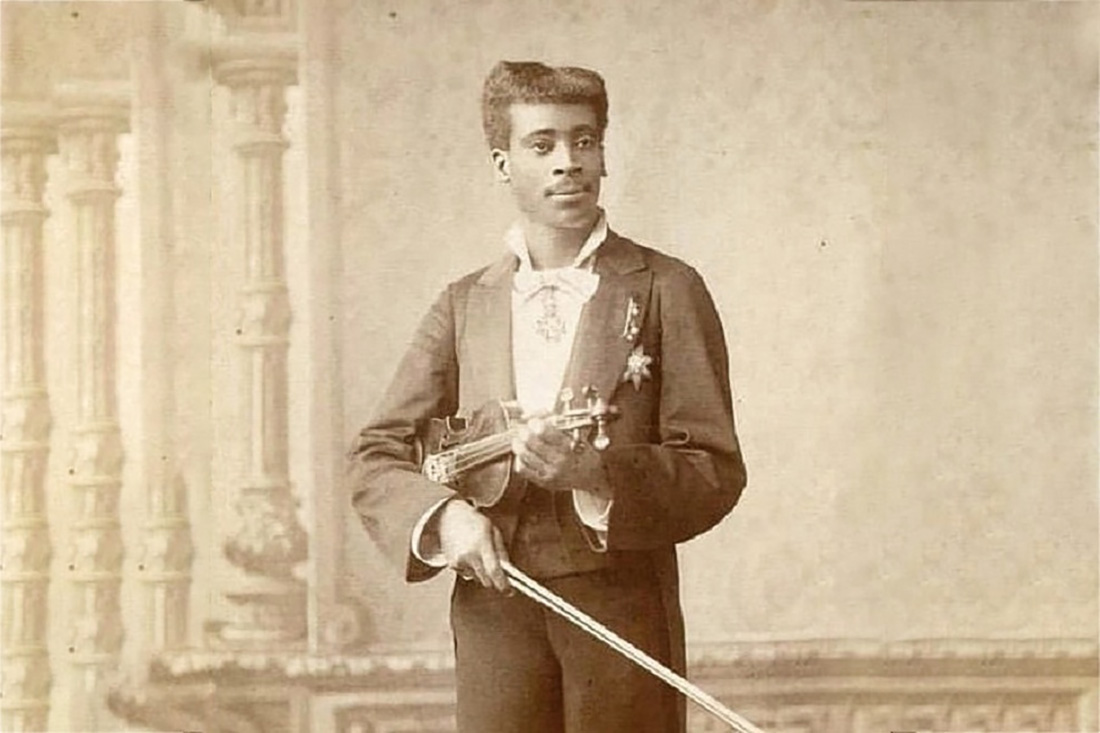Claudio Brindis de Salas: Baron, member of the Legion d’Honneur and musician of the German court, owner of a Stradivarius violin, arrived in Camagüey: “…because he wanted to know that city of dreams and beautiful traditions, cradle of so many warriors, wise men and artists who have raised the name of Cuba abroad”.
The principeño neighborhood welcomed him with extraordinary generosity. He debuted in the Meritorious Society of Santa Cecilia. The next day, he shook La Nueva Aurora society and concluded his visit at the Principal Theater of the legendary city between Tínima and Hatibonico rivers.
Childhood
Grandson of Luis Brindis, first sergeant of the Royal Corps. Son of Claudio Brindis de Salas, violinist, notable double bass player as well as a beautiful baritone voice of unusual range. Praised even by the Marqués de Someruelos himself. Teacher of his little sons.
Brindis was so frightened by the virtue of his eldest son, that nothing could teach him, he had far exceeded it. Precisely for this reason, because of his virtues, intelligence and above all because of his anti-slavery and independence ideas, he was the victim of one of the criminal processes in Cuba against black intelligence, known as La Escalera, … his influences, thanks to his talent, freed him from martyrdom , but not from prison and torture.
Researcher Alina Sánchez notes that grandfather Luis Brindis and men from his mother’s family, María del Monte Salas y Blanco, were high-ranking members of the Pardos y Morenos Battalions, a military institution equivalent to the colonial army made up of whites loyal to the crown. In addition, his mother, María del Monte, was the nursemaid of the Count of Casa Bayona and therefore the young Claudio was considered the Count’s “foster brother”, and made him enjoy a certain protection from that noble family.
La Gaceta de La Habana of 1863 states: Claudio Brindis de Salas has determined to give a concert together with his two sons on Friday at the Liceo. Alright! They say that one of these, notwithstanding the tender age of him, overcomes great difficulties on the violin, which is, as everyone knows, the most difficult of instruments”.
The Belgian instrumentalist José Van der Gutch, at the agency of the child prodigy’s father, instructs him and in 1863, when the little boy was only 10 years old, they offer their first concert together. Ignacio Cervantes was present at said audience at the Havana High School.
Beyond the seas
Mexico. In Veracruz, Mexico, where he settles and begins to live from the concerts that Joaquín Gaztambide organizes for him.
France. The effort, interest and paternal altruism led his son to study in France. José White was black, a violinist and was already succeeding in Paris. In 1869 the doors of the Paris Conservatory were opened to him. He attended the class of maestro Charles Dancla, completed his training with Camilo Ernesto Sivori, a disciple of Paganini himself, and with Hubert Leonard and maestro David.
Italy. About Claudio José Brindis de Salas y Garrido the newspaper El Correo Italiano noted: Caballero Brindis de Salas is a young black man, perfectly black, son of Cuba, of extraordinary talent, with a beautiful and likeable figure, who speaks six or seven languages… he is a violinist of extraordinary activity … and at the same time of an energy that carries the characteristic impetus of the race: he feels with a passion that sparkles in his pupils, which are of an electrifying expression”.
Russia. He wowed at La Scala in Saint Petersburg.
Germany. Kaiser Wilhelm II of Germany. The emperor was fascinated with his art and decided that this black man deserved much more than applause. Before the astonished gaze of his contemporaries, William II made him a baron of the German Empire and named him violinist of his court. Brindis then married a lady of the German nobility.
Martinique, United States, Argentina, other Latin American lands.
Cuba with its racism, exclusions…a waiter did not want to sell him a coffee because of the color of his skin…oh Cuba, how you hurt me…he left!
The final departure and return to immortality. Researcher Alina collects: He arrived in Buenos Aires, without a downpour, without saying a word, without knowing very well that it was May 25th, 1911. From the pension he walked to the Monte de Piedad with the violin.
The store owner extended the receipt, gave him the ten pesos. The black did not return. In 1917, the Argentine newspaper La Razón led a public collection to prevent his remains from being transferred to a common grave. Years later, in 1930 they went to Havana, to the pantheon of solidarity of Cuban music in the Colón Necropolis.
Eusebio Leal and Brindis de Salas
In Old Havana, in what used to be the Church of Paula, there is a concert hall. And in the room, an urn. Oceanfront. Claudio José Domingo Brindis de Salas, the son of Claudio, the immortal.
Bibliography
– El negro del Stradivarius. (En homenaje) Claudio José Domingo Brindis de Salas recuperado 30 de mayo 2023 https://www.iaa.fadu.uba.ar/cau/?p=2531#:~:text=El%20negro%20del,28%20JULIO%202016
– Fondo Jorge Juárez Cano.
Translated by: Aileen Álvarez García






